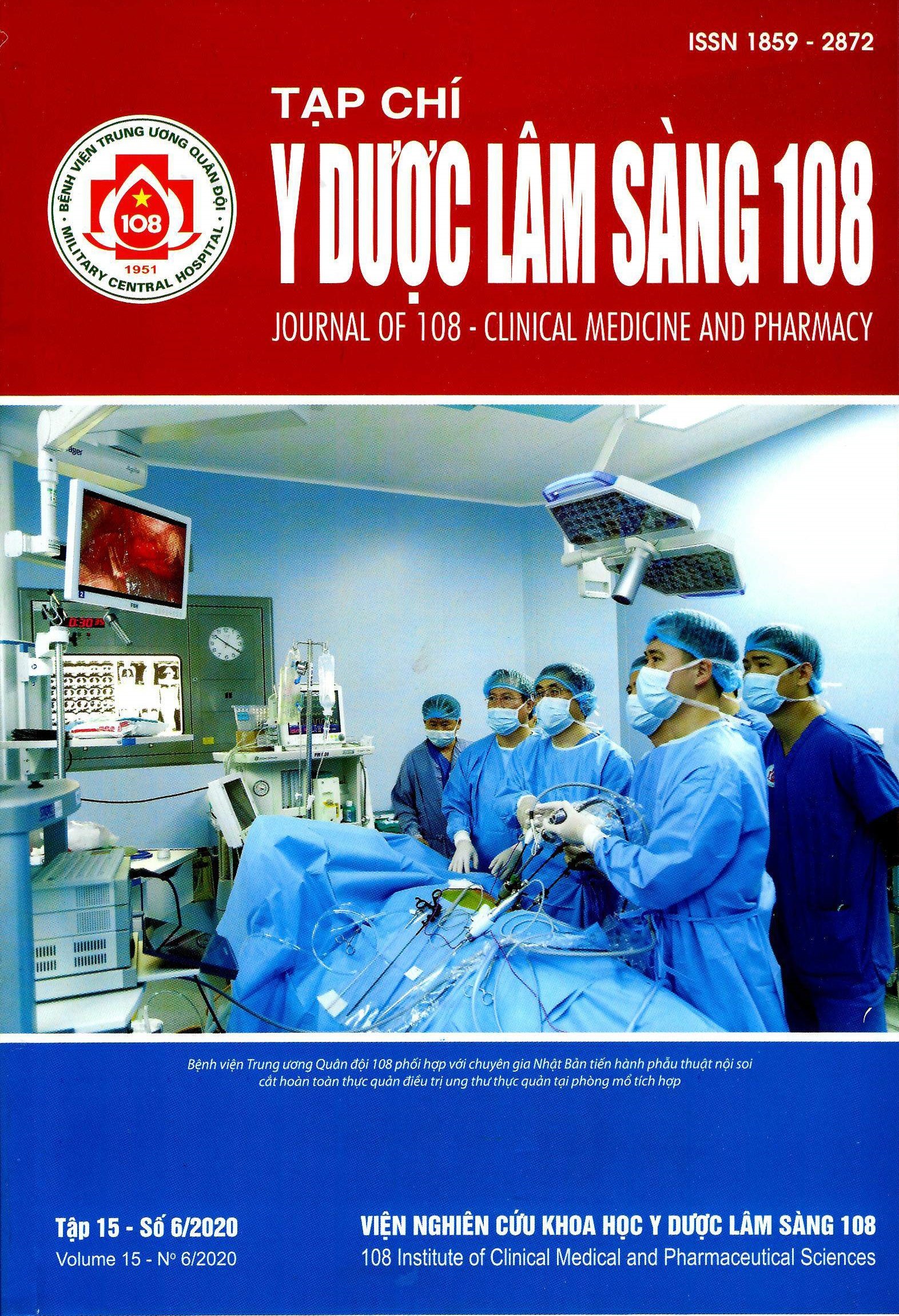The value of magnetic resonance imaging in the diagnosis of main bile duct stones
Main Article Content
Keywords
Abstract
Objective: To determine the diagnostic value of magnetic resonance imaging (MRI) of main bile duct stones. Subject and method: A prospective, controlled study on 84 patients with main bile duct stones at Department of Hepato - biliary and Pancreatic Surgery, 108 Military Central Hospital from June 2017 to March 2020. Who received preoperative MRI to determine the location and number of stones and treated with laparoscopic surgery. Intraoperative findings of the location and the number of stones were to compare with the preoperative MRI findings. Result: MRI in the determination of location common bile duct stones: Sensitivity 97.05% and specificity 93.75% and accuracy 96.42% and positive predictive value 98.5% and negative predictive value 88.23%. Right intrahepatic stones location: Sensitivity 95.65% and specificity 94.73% and accuracy 95.23% and positive predictive value 95.65% and negative predictive value 94.73%. Left intrahepatic stones location: Sensitivity 96.49% and specificity 88.88% and accuracy 94.04% and positive predictive value 94.82% and negative predictive value 92.30%. MRI diagnostic of the number of stone: Sensitivity 77.8% and specificity 98.7% and accuracy 96.4% and positive predictive value 87.5% and negative predictive value 97.4%. Conclusion: The MRI was demonstrated to be a non-invasive and high sensitivity and high specificity and high accuracy in diagnostic tool for main bile duct stones.
Article Details
References
2. Lê Hùng (2004) Bước đầu nghiên cứu đặc điểm hình ảnh cộng hưởng từ trong tắc mật ngoài gan. Luận văn tốt nghiệp bác sỹ nội trú, Đại Học Y Hà Nội.
3. Nguyễn Việt Thành (2009) So sánh giá trị chẩn đoán của các phương pháp chẩn đoán không xâm hại trong bệnh sỏi đường mật chính. Luận án tiến sĩ y học, Đại học Y Dược TP. Hồ Chí Minh.
4. Phạm Hồng Liên (2011) Nghiên cứu đặc điểm hình ảnh và gía trị của cộng hưởng từ 1,5 tesla trong chẩn đoán sỏi đường mật chính ngoài gan. Luận Văn Thạc sỹ y học, Đại Học Y Hà Nội.
5. Nguyễn Hữu Thịnh (2006) Chẩn đoán sỏi và hẹp đường mật trong gan bằng cộng hưởng từ. Y học TP. Hồ Chí Minh 10 (1).
6. Palmucci S, Roccasalva F, Piccoli M et al (2017) Contrast-Enhanced Magnetic Resonance Cholangiography: Practical Tips and Clinical Indications for Biliary Disease Management. Gastroenterology Research and Practice.
7. Sneha Karwa, Vitthalrao Vikhe Patil (2017) Role of magnetic resonance cholangiopancreatography in biliary disorders. International Journal of Radiology & Radiation Therapy 2(4): 95-99.
8. Lee SL, Kim HK, Choi HH, et al (2017) Diagnostic value of magnetic resonance cholangiopancreatography to detect bile duct stones in acute biliary pancreatitis. Pancreatology: 1-7.
9. Park DH, Kim MH, Lee SS et al (2004) Accuracy of magnetic resonance cholangiopancreatography for locating hepatolithiasis and detecting accompanying biliary strictures. Endoscopy 36(11): 987-992.
 ISSN: 1859 - 2872
ISSN: 1859 - 2872
